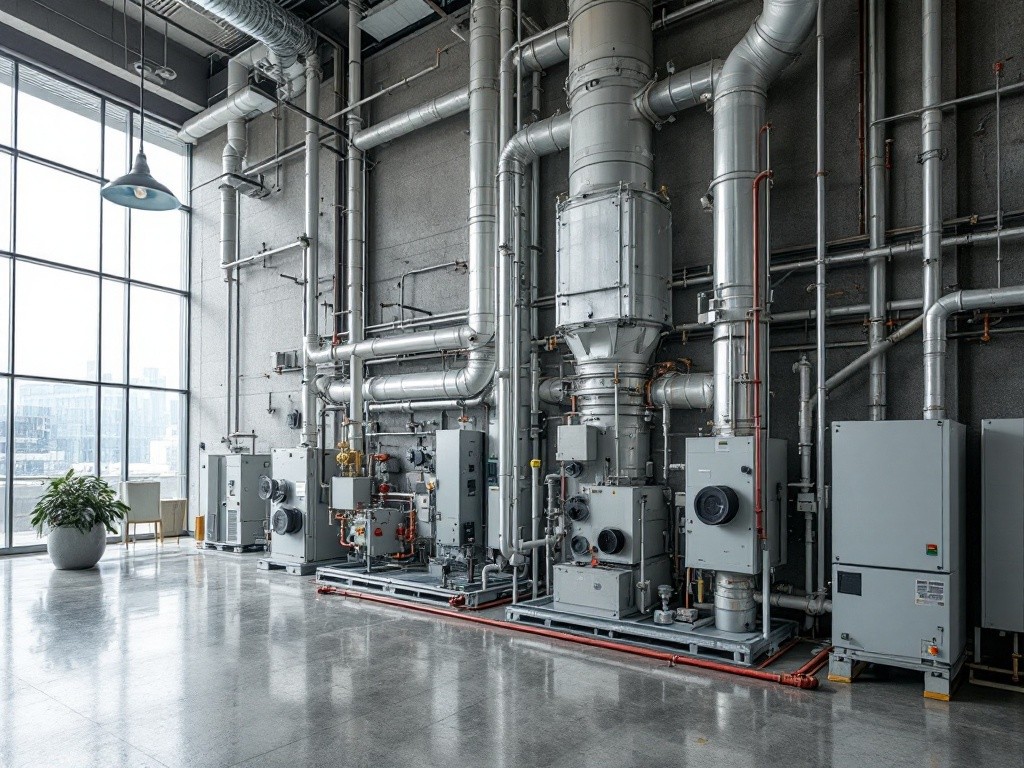MEP model improvement
Improving MEP BIM Accuracy with Video-to-Data AI
Implement an AI solution that improves BIM accuracy. Compare point clouds created from site videos with AI-based BIM models.
And as a result, significantly reduce losses by 7-15 percent.

Low Accuracy of BIM Models: Only 5-20% of projects have accurate BIM models from an MEP perspective.
Significant Deviations: Consultants working on complex buildings often have deviations exceeding 10 feet in asset locations.
Challenges in Model Integration: Trades are responsible for identifying deviations and remodeling them, but integrating and confirming the accuracy of trade models is challenging.
Inaccurate Renovated/Old Models: Almost no renovated or pre-BIM models are accurate or easy to build with accuracy.
Impact on Maintenance: Most assets requiring maintenance fall within the MEP scope, and inaccuracies hinder predictive maintenance efforts.
Limitations of AI: Due to the vagueness and inaccuracies in models, AI approaches to predictive maintenance are limited.
Explanation of the Video-To-Data Pipeline:

1-Capturing Data with Smartphone
We start by letting site teams record simple walkthroughs using standard iPhones.
Thanks to their high-resolution cameras, we gather clear footage of MEP areas—pipes, ducts, and other installations.
Each video is automatically tagged with GPS coordinates and timestamps, so we know exactly where and when it was filmed. This means there’s no specialized gear to buy and no complicated training to worry about.
2-Transforming Video into 3D Point Clouds
Our software extracts individual frames and applies photogrammetry algorithms (like SIFT or SURF) to identify common features across images.
By triangulating these points, we produce a dense 3D map of the site. We then filter out noise and balance the resolution to keep the model both accurate and manageable.
This step is mostly automated, so it doesn’t bog down your team in manual data processing.
3-AI Assisted Comparison
with BIM
Once we have the point cloud, we align it with the existing BIM model through coordinate matching and an AI-guided registration process (often relying on ICP).
Next, we run our discrepancy detection: the system measures differences between the point cloud and the design specs, highlighting any misalignments.
Machine learning models can even classify whether something’s a missing element, a shifted piece of equipment, or a simple measurement error.
4-Visual Feedback and Alerts
We notify users right away if there’s a major clash or deviation, so nothing sits unnoticed for weeks.
A color-coded 3D viewer lets teams examine these discrepancies in detail and navigate through the model to see exactly what needs attention.
Alongside real-time alerts, our platform generates automated reports that can include heat maps, snapshots, and relevant metrics—perfect for quick reviews or deeper analysis.
5-Updating the BIM Model
We also help teams integrate these findings back into their design environment. If the AI spots a shifted duct, it suggests a fix for the Revit or Navisworks file through APIs or plugins.
Project leads can accept or adjust these revisions before finalizing any updates.
Every tweak gets logged, so there’s a complete history of what changed and why, making audits or compliance checks easier down the road.
6-Tackling Common Industry Pain Points
This approach addresses real challenges like MEP errors, poor trade coordination, and outdated models.
Because scans are cost-effective and quick to run, frequent updates keep models truly as-built.
That means fewer unexpected delays, more accurate data for predictive maintenance, and a single reference point for everyone from electricians to HVAC techs. Altogether, it streamlines construction workflows and cuts rework costs, all while building a foundation for smarter, AI-driven project management.
Core Technologies for a Video-to-BIM Pipeline
Mobile Data Capture
iOS/Android Apps built in Swift or React Native for quick, on-site video captures
Secure Transfer (HTTPS, SSL/TLS) ensures data integrity and privacy
Video-to-3D Processing
Photogrammetry & Computer Vision (OpenMVG, OpenMVS, OpenCV) convert frames into dense point clouds
Python-based Automation leverages NumPy, SciPy, and FFmpeg for efficient data handling
Neural Radiance Fields (NeRF) reconstruct hidden or partially occluded features in challenging MEP spaces
3D Foundation Models & Semantic Understanding
3D-GPT or Transformer-Based 3D Models accelerate object recognition, even with incomplete or noisy data
Large Language Models integrated with 3D semantic segmentation for natural-language queries
Point Cloud Optimization & BIM Alignment
Open3D / PCL for cleaning and aligning clouds with IFC or Revit models
Iterative Closest Point (ICP) to match as-built data with design geometry
Automatic Metadata Enrichment: AI-driven tagging of objects (valves, pipes, junctions) for robust BIM updates
Discrepancy Detection & Visualization
Cloud-to-Mesh Distance and Statistical Outlier algorithms identify clashes
React / Vue.js frontends with Three.js or Potree for interactive 3D reports
Mixed Reality Integration (Hololens, Apple Vision, ARCore) for on-site validation
Reporting & Integration
Automated PDFs (ReportLab, WeasyPrint) summarize findings
Autodesk Forge APIs streamline model updates in Revit or Navisworks
Task Queues (Celery) handle large-scale processing in the cloud
BCF (BIM Collaboration Format) exports discrepancy data for cross-team coordination
Predictive Analysis & Maintenance
Real-Time Progress Tracking: AI monitors schedule deviations and resource use
Machine Learning Anomaly Detection: Spots early signs of mechanical or structural failure
Integration with CMMS/ERP: Syncs asset data with maintenance and resource planning systems
Security & Compliance
Encryption (SSL/TLS, AES) plus OAuth 2.0/JWT for authentication
GDPR-ready data retention policies and audit logging for full traceability
Zero-Trust Architectures for enterprise-grade protection against unauthorized access
By integrating advanced object recognition from Lepei we anticipate a 30–50% reduction in rework costs tied to MEP inaccuracies.
On the technical side, leveraging models like MobileNetSSD and U-Net (for real-time detection and segmentation) ensures prompt feedback on potential discrepancies.
The NeRF-based or foundation 3D approaches further refine point cloud accuracy by reconstructing occluded elements in tight MEP environments.
Combined with ICP alignment and deviation analysis scripts, this pipeline not only scales efficiently on standard cloud infrastructure but also remains easy to adopt—requiring only a smartphone and deep training.
The end result is a comprehensive, data-driven method to continually update BIM models, ensuring reliability for ongoing predictive maintenance and future expansions.




